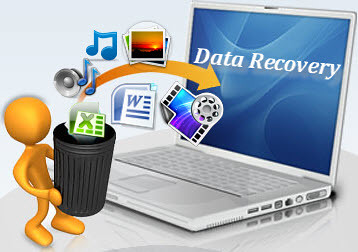Finder Windows give you flexibility in how they present items to you. For example, you can view items by Icon, List, Column, or in Cover Flow (a new view that debuted with Mac OS X Leopard). One of the easiest ways to alter or switch between views would be by clicking on the View buttons in the Finder Toolbar. You could also use the Finder Menu. Mac product key finder will scan your Mac for installed software and show you your serials. Mac OS X 10.4 Intel/PPC, Mac OS X 10.5 Intel/PPC, Mac OS X 10.6/10.7/10.8. Figure 1: The default Mac OS X Finder and Desktop. The Desktop is the center of your Mac OS experience, so here’s a quick description of its most prominent features: Desktop: The Desktop is the area behind the windows and the Dock, where your hard drive icon (ordinarily) lives. The Desktop isn’t a window, yet it acts like one. Alfred 4 for Mac Alfred is an award-winning app for macOS which boosts your efficiency with hotkeys, keywords, text expansion and more. Search your Mac and the web, and be more productive with custom actions to control your Mac. Download Alfred 4 Buy the Powerpack.
The Simple Finder, introduced in Mac OS 8, is a pared-downversion of the standard Mac OS Finder. In Mac OS 8 through9.x the Simple Finder is always available, but in Mac OS Xit is only for specifically configured non-administrative accounts.
To activate the Simple Finder, follow these steps:
Mac OS X
Note: The Simple Finder is only available in Mac OS X10.2 and later.
- While logged into an account with administrative privileges, fromthe Apple menu, select System Preferences....
- In System Preferences, from the View menu, selectAccounts.
- In OS X 10.2.x only, in the
Accountspreference pane,click the Users tab. - In the user list, select the account that you'd like to set to usethe Simple Finder, then click Capabilities... (10.2.x),Limitations (10.3.x), or Parental Controls (10.4.x).
- In 10.4.x, in the pane that appears, check the box next toFinder & System, and then clickConfigure.... In the sheet that drops down, click theradio button next to Simple Finder. You may determine whichapplications the account will have access to, and select otherfunctions which the account may use (e.g., CD and DVD burning,modifying the Dock). When you're finished, click OK to saveyour changes.
In 10.3.x, in the pane that appears, click the Simple Finderbutton. In the section below that, you may determine whichapplications the account will have access to. Once you're finished,click another account, or close System Preferences and when prompted,click OK to save your changes.
In 10.2.x, in the sheet that appears, click the checkbox next toUse Simple Finder. In the section below that, you maydetermine which applications the account will have access to. Onceyou're finished, click OK.
When you are logged into an account where the Simple Finder is active,you can access the normal Finder by selecting Run FullFinder... from the Finder menu. You'll be asked toenter an administrator's username and password, and then the fullFinder will appear. To revert back to the Simple Finder, selectReturn to Simple Finder from the Finder menu.
Mac OS 8 through Mac OS 9.x
- From the Finder's Edit menu, selectPreferences....
- In Mac OS 8.5 and later, click the General tab, thenclick the checkbox next to Simple Finder. In Mac OS 8.0 and8.1, click the checkbox next to Simple Finder.
Before you use the Finder to sync content to your iOS or iPadOS device, consider using iCloud, Apple Music, or similar services to keep content from your Mac or PC in the cloud. This way, you can access your music, photos, and more on your devices when you aren't near your computer. Learn more about using Apple Music or iCloud Photos instead of the Finder.
If you use iCloud or other services like Apple Music to keep your content up to date across all of your devices, some syncing features through the Finder might be turned off.
What can you sync with the Finder


- Albums, songs, playlists, movies, TV shows, podcasts, books, and audiobooks.
- Photos and videos.
- Contacts and calendars.
Sync or remove content using the Finder
Mac Finder Not Working
- Open a Finder window and connect your device to your computer using a USB cable. If you connect your device to your computer with a USB cable and your computer doesn't recognize your iPhone, iPad, or iPod, learn what to do.
- Your device appears in the sidebar of the Finder window. Click the device to select it.
- If prompted, trust your device.
- Select the type of content that you want to sync or remove. To turn syncing on for a content type, select the checkbox next to Sync.
- Select the checkbox next to each item that you want to sync.
- Click the Apply button in the lower-right corner of the window. If syncing doesn't start automatically, click the Sync button.
* You can only sync your device with one Apple Music or Apple TV library at a time. If you see a message that your device is synced with another Apple Music or Apple TV library, your device was previously connected to another computer. If you click 'Erase and Sync' in that message, all content of the selected type on your device will be erased and replaced with content from this computer.
Sync your content using Wi-Fi
After you set up syncing with the Finder using USB, you can set up the Finder to sync to your device with Wi-Fi instead of USB.
- Connect your device to your computer with a USB cable, then open a Finder window and select your device.
- Select “Show this [device] when on Wi-Fi.'
- Click Apply.
When the computer and the device are on the same Wi-Fi network, the device appears in the Finder. The device syncs automatically whenever it's plugged in to power.
Get help
Finder Mac Os X
- Learn how to sync content with iTunes.
- Learn what to do if you see an error when you try to sync your iPhone, iPad, or iPod touch.
- Learn how to redownload items that you purchased on another device.
- Learn how to import photos and videos to your computer.